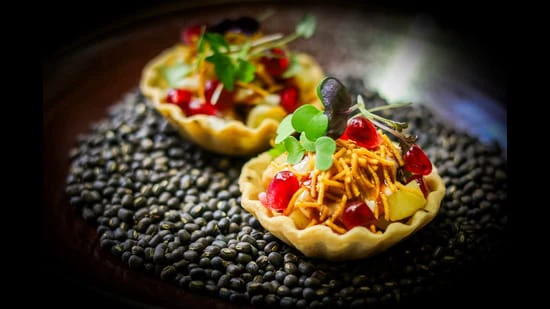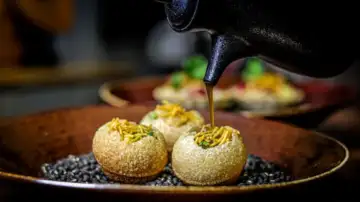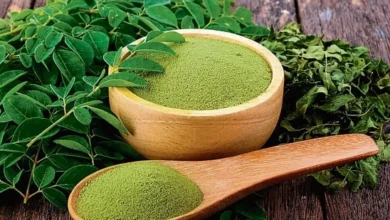Race to the Finnish: Sanjoy Narayan tries familiar flavours at Ravintola Indus, Helsinki

Race to the Finnish: As an Indian who has lived in Finland for several years, the craving for Indian food surfaces regularly, and usually goes unmet.
The typical Indian restaurant here serves predictable fare: turmeric-and-tomato-heavy gravies that masquerade as everything from butter chicken to paneer masala (and all taste the same), or “biryani” that is just meat and rice hastily tossed together in a frying pan.
Cooking at home is the only real alternative, but my culinary skills leave much to be desired (though my dal tadka has improved considerably with practice). Given all this, I wasn’t very hopeful when I heard of a restaurant that was “doing things differently”.
Race to the Finnish: Ravintola Indus is refreshingly different, though.
The menu at this Indian restaurant in central Helsinki has a determinedly authentic sensibility, and yet there are plenty of surprises in store too.
The steamed momos are thin, succulent, and stuffed with moose meat. The corn-fed Finnish chicken, prepared Chettinad-style, is full of flavour.
Also on the menu are reindeer thukpa, Bengali machher jhol made with Baltic herring, Finnish northern pike slathered in mustard and steamed in a plantain leaf (an interesting departure from hilsa), and malai curry with Nordic noble crayfish. There’s even chitol machher kaliya, an Assamese delicacy typically made with knifefish and bananas and usually hard to find in India. In place of knifefish, there is pike-perch from Finland’s abundant lakes.
There are phuchkas on the menu too, and Delhi papri chaat, the latter cleverly served in a shell made of the papri, each piece designed to be popped whole into the mouth. For dessert, the chai biskoot is pure nostalgia: spiced-Assam-tea-flavoured ice-cream atop a crushed bed of Parle-G.
The innovative menu is the creation of Raja Sharma Rymbai, who took over the Indus kitchen in the role of consultant, six months ago, and reinvented its menu. The 42-year-old self-taught chef started out as a journalist (in a career that included a stint with the Hindustan Times), before developing an interest in the farm-to-table movement. He eventually opened a cafe in his native Meghalaya.
He became involved with the India chapter of the global NGO Slow Food Foundation, set up by Carlo Petrini in Italy in the 1980s. In 2015, Rymbai’s work with the NGO led to an invitation to that country, where he earned a Master’s degree in food culture and communication.
He fell in love with cooking, and secured a position at Sea Horse, one of Helsinki’s most respected and dyed-in-the-wool traditional Finnish restaurants. Rymbai launched (and still runs) a catering business too.
His motivation stems from two core beliefs, he says. First, he is determined to expand international perceptions of Indian cuisine. “Most restaurants abroad serve essentially Punjabi food. Indian cuisine encompasses so much more,” he says. Second, he remains committed to the Slow Food principles of sourcing local ingredients sustainably while preserving and celebrating traditional recipes.
Rymbai is now working to introduce a similar locavore menu at an Indian restaurant in Bra, Italy, the birthplace of the Slow Food movement. Meanwhile, in Helsinki, the Indus experiment continues to evolve.
 Finnish diners seeking Indian food typically expect the familiar list: butter chicken, naan, papadums. Most have little exposure to the vast regional diversity, making dishes such as machher jhol and malai curry seem, well, foreign. Yet Rymbai’s early success suggests that Helsinki’s dining scene is ready for the adventure.
Finnish diners seeking Indian food typically expect the familiar list: butter chicken, naan, papadums. Most have little exposure to the vast regional diversity, making dishes such as machher jhol and malai curry seem, well, foreign. Yet Rymbai’s early success suggests that Helsinki’s dining scene is ready for the adventure.
His own journey from Meghalaya to Italy, Finland and back to Italy, meanwhile, demonstrates food’s unique capacity to bridge cultures while honouring both heritage and place.
In an era increasingly focused on authenticity and sustainability, Rymbai’s fusion of Indian tradition with Nordic ingredients offers a compelling vision of how cuisine can evolve when combined with imagination, and freed from conventional expectations.









